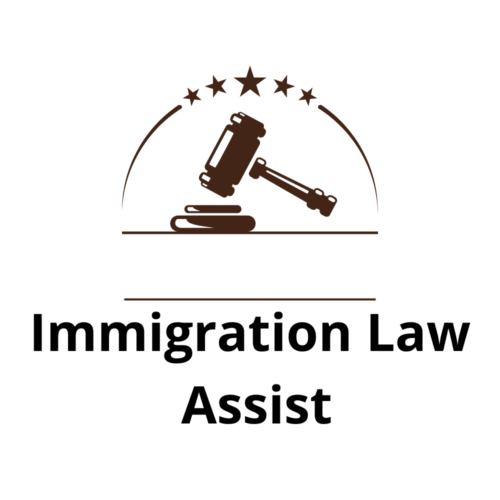
Overview of Proposed Legislative Changes
In 2025, Canada is set to introduce significant amendments to its Immigration and Refugee Protection Act (IRPA) and the Department of Citizenship and Immigration Act. These legislative changes aim to modernize Canada’s immigration system, enhance security protocols, and streamline application processes. The government’s intent is to respond to evolving global migration trends and to ensure that Canada’s frameworks remain robust, equitable, and efficiently managed.
The proposed changes are rooted in the need for improved processing times and a more responsive asylum system. The anticipated reforms seek to clarify who is not eligible for asylum in Canada in 2025, with specific criteria that delineate exclusions. This is part of broader adjustments that will inform potential applicants about the updated policies and eligibility assessments. Furthermore, as the government revises its immigration strategies, it emphasizes the importance of protecting Canadian citizens while still extending compassion to those in need.
Central to the reforms are motivations linked to security and data accuracy. In response to cambios en el intercambio de datos entre instituciones migratorias en Canadá, authorities are striving for an integrated approach that allows for comprehensive evaluations of applicants. This includes new checks on criminal backgrounds and status verification processes, ensuring that only eligible individuals are granted entry into the country under the asylum provisions. Moreover, the government acknowledges that external pressures, such as increased global displacement and humanitarian crises, necessitate a dynamic response within its immigration framework.
Another crucial aspect of the reforms highlights the impact on the overall Canada immigration document review 2025, which aims to simplify paperwork and compliance requirements for both applicants and immigration officials. As Canada positions itself as a leader in international humanitarian efforts, it is imperative that these legislative changes balance efficiency with responsible governing principles in the realm of immigration.
Information Sharing Between Institutions
The Canadian immigration landscape in 2025 is poised to undergo significant transformation, particularly regarding how information is shared among governmental institutions. The proposed legislative changes aim to enhance collaboration and data sharing between federal, provincial, and territorial authorities. This approach is framed as a necessary step toward improving the efficiency and efficacy of the immigration process, particularly in tackling challenges related to national security and managing immigration and refugee applications.
One of the primary motivations behind these changes is the urgent need to streamline the flow of information regarding immigration status, background checks, and eligibility assessments. Enhanced information sharing could lead to faster processing times for immigration applications, thereby easing the backlog that has plagued the system. This efficiency is crucial in a climate where many individuals are seeking to understand who is not eligible for asylum in Canada in 2025, as the new rules for applying for asylum are being established.
However, while the benefits of these changes are evident, there are also significant privacy concerns that must be addressed. The integration of data among different institutions raises questions regarding the protection of sensitive personal information. Individuals may fear that their data, once shared among various agencies, could be misused or inadequately protected. Thus, the Canadian government will need to strike a careful balance between promoting transparency and maintaining privacy rights as part of the proposed cambios en el intercambio de datos entre instituciones migratorias en Canadá.
Furthermore, addressing how these measures will impact individuals is essential. For example, understanding cómo me afecta la nueva ley de inmigración en Canadá 2025 will be vital for those impacted by these changes. As adjustments are made to the immigration policy framework, the interplay between enhanced information sharing and the rights of applicants will be a focal point for ongoing discussions and analyses.
Greater Control Over Immigration Documents
The landscape of Canadian immigration is undergoing significant transformation, particularly with the introduction of new rules for applying for asylum in Canada in 2025. One of the primary goals of these changes is to enhance control over immigration documents, which plays a pivotal role in maintaining the integrity of the immigration system. This initiative is particularly important in light of growing concerns regarding identity fraud and the misuse of documents for gaining access to immigration benefits.
The upcoming regulations will introduce stricter verification processes for immigration documents. Applicants will be required to submit a more comprehensive set of documents, all of which will undergo thorough scrutiny to ascertain their authenticity. These measures aim to reduce instances of fraudulent claims and ensure that only those who are genuinely eligible, including those who are not eligible for asylum in Canada in 2025, can obtain immigration status. Enhanced scrutiny is expected to lead to a more equitable process where legitimate applicants are prioritized without the hindrance posed by fraudulent cases.
Moreover, the accountability measures that accompany these new rules will ensure that immigration authorities are held responsible for the issuance of documents. Agencies involved in processing immigration applications will now bear an increased obligation to thoroughly verify the credentials of each applicant. This will not only bolster public confidence in the immigration system but also streamline the overall immigration process by reducing the backlog caused by fraudulent claims.
As the Canada immigration document review 2025 unfolds, comprehensive guidelines will outline the expectations from applicants and immigration authorities alike. The potential changes will also affect the way information is shared between institutions, addressing the cambios en el intercambio de datos entre instituciones migratorias en canadá. Overall, these enhancements are intended to create a robust immigration framework that allows for clarity and efficiency in processing applications while safeguarding the integrity of the system.
Modernization of the Asylum System and New Ineligibility Measures
The Canadian government has proposed significant changes to its asylum system, aimed at enhancing efficiency and effectiveness in managing claims for protection. One of the primary goals behind the modernization efforts is to streamline the process for assessing asylum applications while ensuring that those in genuine need of protection are prioritized. In light of growing pressures on the immigration system, especially with an increase in global displacement, these changes are seen as essential for maintaining the integrity of Canada’s humanitarian commitments.
Among the most notable reforms are the new ineligibility measures for certain groups of asylum seekers. These measures are designed to prevent individuals who take advantage of the system from applying for asylum. As Canada seeks to filter out claims that may not genuinely meet the criteria for protection, the question arises, who is not eligible for asylum in Canada in 2025? Under the proposed regulations, individuals who have previously ceased to be a refugee, those who can be offered protection by another country, or those who have been involved in criminal activities may find themselves automatically disqualified from receiving asylum status.
The emphasis on preventing abuses within the system aims to uphold Canada’s commitment to providing refuge to those fleeing persecution. However, there are concerns about how these new rules for applying for asylum in Canada will affect the overall sentiment towards genuine refugees. As policymakers move forward, the focus will also be on balancing the necessity of stringent measures while ensuring fair and thorough reviews of each claim. The forthcoming changes will not only impact the current landscape in Canada but will also shape future pathways for asylum seekers navigating the system amidst the evolving dynamics of global migration and border management.


